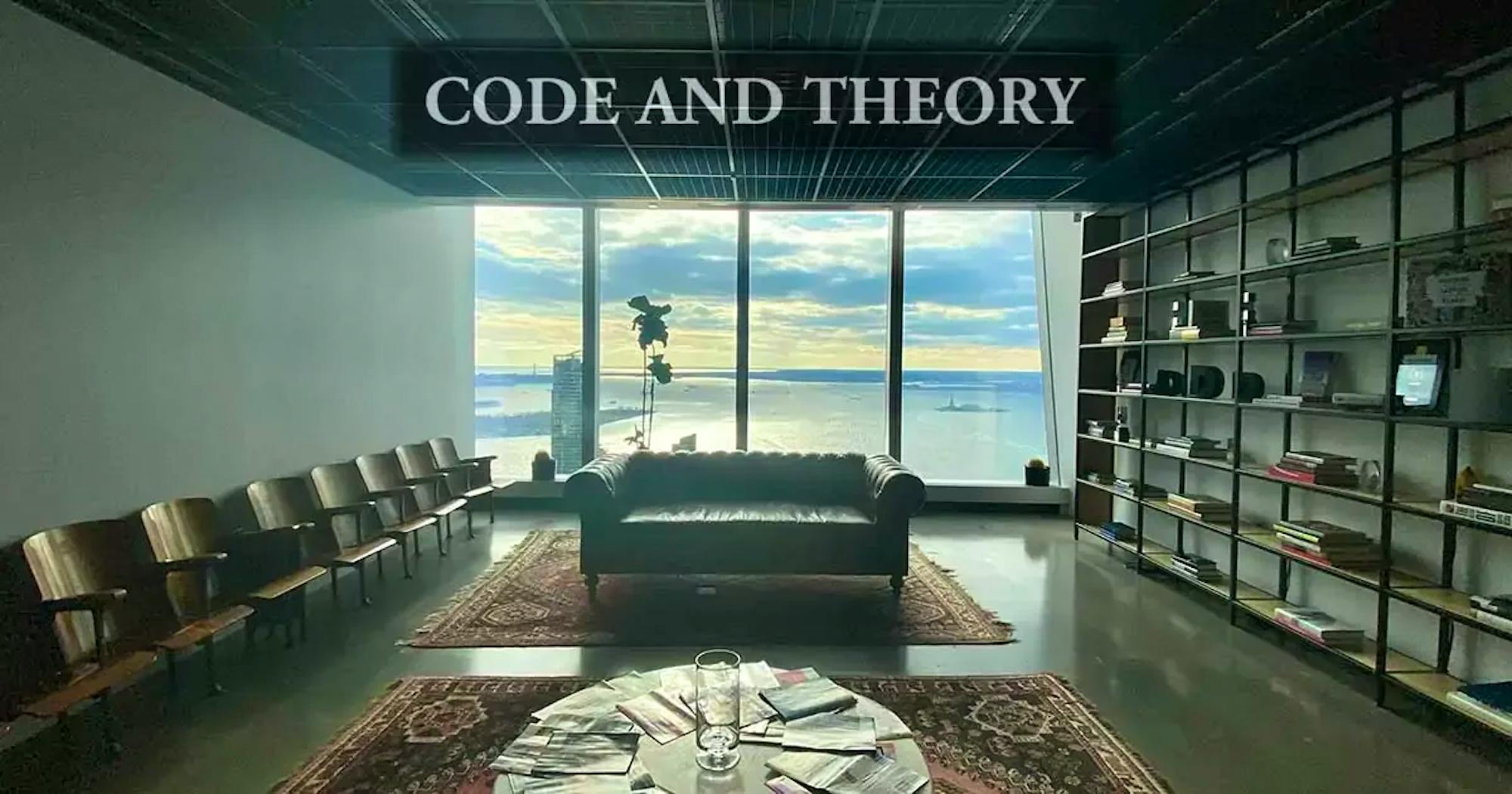Adweek | With Every Client Rebrand, Code and Theory Reinvents Itself

Originally published in Adweek
In an industry where the word “creativity” is applied somewhat vaguely to every job title and advertisement, creative agency Code and Theory has a pretty practical definition for it.
“Creativity is the discipline of solving problems,” CEO Dan Gardner told Adweek. “That’s what we do. Every new business pitch starts with that on the first slide, and it’s connected in every new business meeting.”
Code and Theory specializes in helping brands that are ready for a significant digital transformation. The agency was tasked with rebranding the Washington Football Team earlier this year, transforming architecture firm SOM’s website, and gave Amazon Ads, a b-to-b business, a new consumer-facing identity. It also branded BioReference’s at-home lab test service that has become crucial to healthcare throughout the pandemic.
Despite the Great Resignation’s impact on the industry, Code and Theory onboarded 300 new hires this year. The agency, which was bought by Stagwell Group in 2016, has seen 40% year-over-year growth, acquiring new clients such as J&J Baby and Amazon Ads.
According to the team, behind each final product and new client partnership is a culture of people who rethink industry practices, obsess over problem-solving and work to understand clients’ business just as much as their own.
“They don’t let the status quo be accepted as the source of truth,” said BioReference chief digital officer Richard Schwabacher. “They really do apply critical thinking to everything.”
Learning the client’s language
Technologists make up over a third of the team at Code and Theory, and while SOM partner Ken Lewis stressed that the terminology used by industry professionals can create divides in conversation, the agency and Lewis’ team were quickly speaking the same language.
“When you meet someone who is a technical expert in their area, they start to talk in what I call mumbo jumbo,” he said. “We all started talking in the same way very quickly. It allowed us to progress so much faster than we had ever progressed before.”
Code and Theory also has several employees with architectural backgrounds, which made the process of designing SOM’s website more seamless. According to Gardner, the agency is determined to hire people from diverse backgrounds, which makes working with clients from a variety of fields a smoother process. According to Schwabacher, “very few agencies understand the complexity of healthcare” like Code and Theory does.
“The type of people we attract are super inquisitive, and that’s something that kind of runs true throughout all of our hires,” said Code and Theory chief marketing officer Brent Buntin. “We have people that really dedicate themselves to learning our clients’ business. We aim to become experts.”
Code and Theory named, branded and introduced Scarlet, BioReference’s at-home testing solution. Schwabacher made note of the agency’s ability to convey a complex topic in a way that is both “simple and efficient,” which he believes speaks to the shop’s understanding of healthcare.
“The animation is simple, but it very quickly tells you what we do and why we do it,” he said. “That’s why you work with Code and Theory. They create a trustworthy brand that’s also warm and welcoming. In healthcare, it’s really hard to do all that.”
Creating a collaborative process
SOM team members watched as Code and Theory redesigned their website in real time, and when the final product was almost complete, all 1,500 members of the SOM team were asked to offer final feedback.
Throughout development, Code and Theory collaborated with over 100 global SOM stakeholders to create a unified site in both English and Chinese. The final product completely modernized SOM’s look with live animation, a reorganized content model and a slick aesthetic.
“We’re not the agency that’s going to go off in a corner, come back with a big idea and say, ‘Take it or leave it,’” said Buntin. “Oftentimes, agencies just want to come in there and tell clients what to do, but we want to learn as much from them as we provide to them.”
According to Finn MacLeod, assistant head of global communications at SOM, Code and Theory opened their books and gave the SOM team “access to everything.”
“They were totally fine with us watching it happen in real time and offering comments,” said MacLeod. “I’m sure lots of clients say, ‘Go do it and come back with the final product,’ but we are very detail-oriented and they responded to that.”
Gardner stressed that the agency’s tendencies to invite and engage with client feedback speaks to its culture of constantly rewriting rules and questioning old practices.
“Internally, we are constantly pushing this idea of change,” Gardner said. “We’re always challenging everything and are natural contrarians within the organization.”
Obsessing over detail
SOM remembers spending two hours with Code and Theory debating the impact of the color red. Even if the agency had a specific agenda for that meeting, SOM remembers that the creatives were always more than happy to “jump down rabbit holes.”
“It was interesting because I know Code and Theory had all these deliverables they needed to achieve, but they entertained our conversation,” MacLeod said.
According to Gardner, curiosity and attention to detail are the agency’s main points of differentiation. Megan Imbres, global head of brand at Amazon Ads, believes Code and Theory stands out in the space as a shop that “obsesses about the execution as much as the concept.”
When asked what they needed to work on as an agency, Gardner and Buntin shared a laugh and agreed, “everything.”
“There are no sacred cows,” Buntin said. “Everything is constantly up for optimization.”



